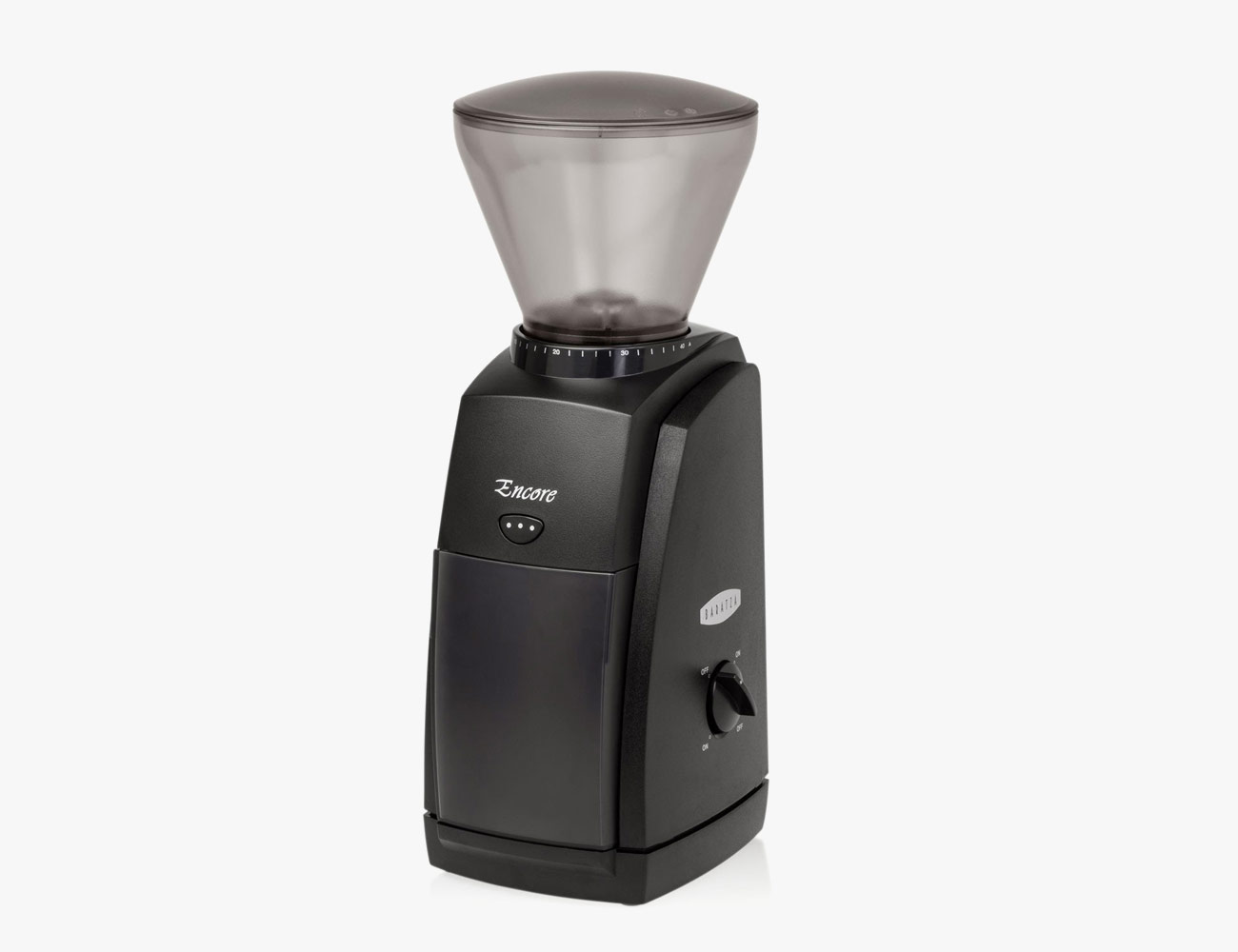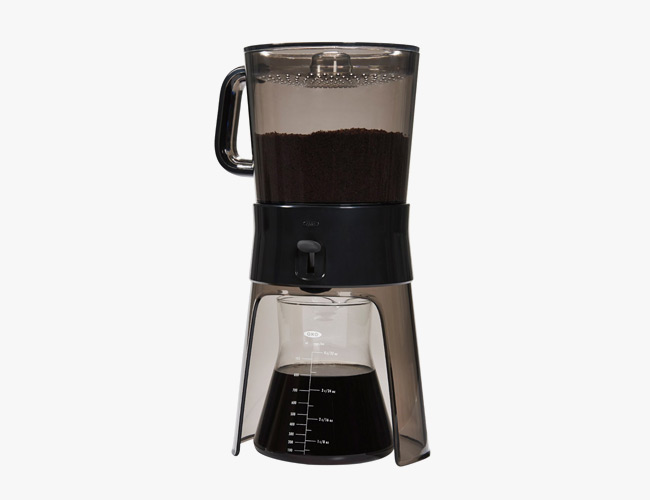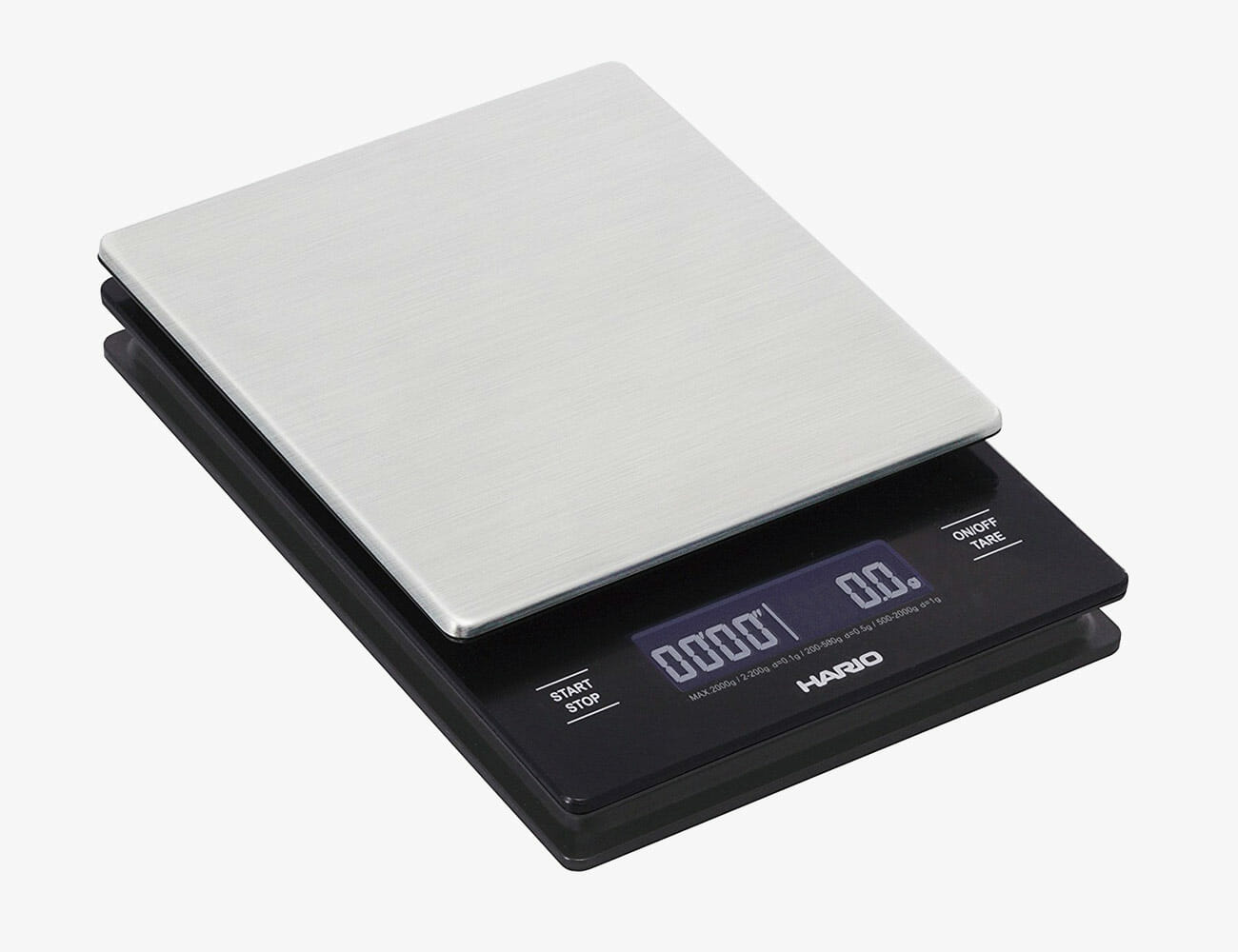This definitive guide to cold brew coffee explores everything you need to make it at home, including gear recommendations and a step-by-step recipe provided by a leading expert.
Cold-brewed coffee is made of the same stuff as its hot counterpart — water and ground coffee beans — and in much the same way. Brewing coffee comes down to the shifting and dynamic between seven elements; coffee-to-water ratio, water quality, coffee beans, grind setting, agitation, time and temperature. Only the last two are changed significantly when making cold brew coffee.
But the final product is radically different, and not in a mustachioed, wishy-washy sort of way. It’s richer, thicker and more intense than any other brew method out there. Most recipes and how-tos would have you (rightly) dilute the final product in loo of drinking what amounts to a coffee concentrate, especially when it is at its best — the summer.
“It’s probably the easiest brew method to perfect,” says former Verve shop manager and present coffee educator at Partners Cofee, Edward O’Hickey. “When you’re making a cup of hot coffee, the temperature of the water acts as a catalyst for extraction — pulling and dissolving solids from the grinds and into the cup — so extraction occurs faster.”
Where your typical home brewer will take five to 10 minutes, cold brew takes, at a bare minimum, 12 hours.
With cold brew, the entire process is slowed way, way down. Where your typical home brewer will take five to 10 minutes, cold brew takes, at a bare minimum, 12 hours.
Due to its relatively recent induction into the greater coffee zeitgeist, O’Hickey says there’s still plenty of misconceptions about what cold brew is and isn’t. He says there’s no real evidence to support the notion that it carries more caffeine, and that there isn’t any more or less coffee matter in a cup of cold brew than there is a cup of regular old hot coffee. And, perhaps most useful to our interests, it’s not even slightly difficult to make.
“There’s not really any techniques to master or super fine points to hit,” O’Hickey says, “it’s a matter of time and measurement, mostly.”
And thank goodness for that. Neither willpower nor dawn wake-up times can defeat the misery of the sticky heat that’s coming for us (and for some, has already arrived). Yet the morning cup of coffee needn’t be sacrificed. The smell, the caffeine, the taste — it’s liquid comfort, and it’s necessary. Before we get into the nitty-gritty, however, here’s the gear you need to make it rightly.
What You Need to Make Cold Brew Coffee
Writing about cold brew coffee for a publication with a keen focus on products is a bit ironic. Cold brew is the least gear-intensive method of brewing coffee out there. All you need: grinder, scale, beans, a container and a means to separate grinds from brewed coffee. None of that is particularly pricey, and if you’ve already invested in a coffee kit, there’s a good chance you already have some components covered.
Burr Grinder
If you want good coffee, you should already own a coffee grinder. And we’re talking about a burr grinder, which grinds coffee more precisely than blade grinders, which is more apt for grinding spices. Baratza is the leading brand in coffee grinders, which is why it’s our pick for best coffee grinder, thanks to its reliability, longevity and modularity. Oh, and the unrivaled customer service is like having a barista on speed dial.
Brew System
You could probably make cold brew in your bathtub. But we’d recommend an actual cold brew system like the OXO Brew Cold Brew Coffee Maker. The system evenly distributes water over coffee grounds, creates a clean batch of concentrate and is easy to clean.
Scale
A scale will ensure you’re measuring out the perfect amount of water and coffee. The process of making cold brew, and coffee in general, is one of the most scientific things you can do in the kitchen. Don’t ruin a batch of cold brew because you decided to eyeball the ratios. This Hario scale is also great for making pour-over coffee thanks to its built-in timer.
Coffee Beans
Cold brew is lauded for its low acidity, making it a great option for those with stomach sensitivity. Reach for coffees that are already low in acidity, with heavier notes like cocoa, molasses and dates. Luckily Trade makes it easy to narrow down its over 400 coffees to the handful that’ll suit your exact needs.
How to Make Cold Brew Coffee
Partners’ official cold brew recipe makes about 25 ounces of cold brew concentrate. Diluted with water, it translates to roughly six cups of cold brew coffee. It can be scaled up or down according to need.
Step 1: Grind 115 grams (roughly four ounces) of freshly roasted beans.
The grind should be on the coarse side, about the size of breadcrumbs. “There’s not really a need to grind super fine with cold brewed coffee,” O’Hickey says, “the longer brew time means you’re getting everything out of the beans, and a larger grind makes later steps easier.”
Step 2: Put ground coffee in a brewer and pour eight cups of water over grinds.
O’Hickey says the vessel doesn’t really matter (“You could seriously make cold brew in a bucket if you want”), but to make sure the container is large enough to hold the brew without much trouble. This recipe was meant to be made in a large French press, but doesn’t have to be.
Step 3: Allow mixture to steep for 18 hours.
The brew can steep in the fridge or on the counter — wherever it’s not going to be knocked over. What happens in steeping is a protracted version of hot coffee’s brewing process, just without temperature as a catalyst for extracting coffee material from the grinds.
Step 4: Drain mix through a fine-mesh strainer or coffee filter.
This is where the coarser grind helps you out. Because the brew time is so long there’s no loss in the extracting of coffee matter from the grinds, thus a coarser grind is simply easier to strain without too much sediment finding its way to the final product. If you’re making this recipe in a french press, push the plunger down and perform the same extra filtering step (“Unless you want a gritty, silty cold brew,” O’Hickey says).
Step 5: Dilute with water or milk.
If you’ve ever tried cold brew and found it alarming dense or too strong, it was likely not diluted before serving. “Cold brewing is usually more viscous and a bit heavier than hot coffee — cafés typically cold brew with this in mind and dilute the concentrated cold brew with water to make it more drinkable,” O’Hickey says. “When I make it at home I typically go with 1-part water, 1-part concentrate but there isn’t a best way.” Serve with ice.
Step 6: Drink.
According to O’Hickey, the primary differences between a cup of cold brew and a cup of iced or hot coffee is a distinctly less acidic taste. “Coffee brews in a stratified manner,” O’Hickey says. “The first components that come out are acids, then the sweeter components, then the bitter material. You need all three to balance one another out to make a properly extracted coffee. With the longer extraction time cold brewing brings, you’re more likely to get this balance right, there’s a much larger margin for error.” Cold brewing simply enables you to brew coffee sans the difficulty of brewing through a pour over or other hot brewing mechanisms.






